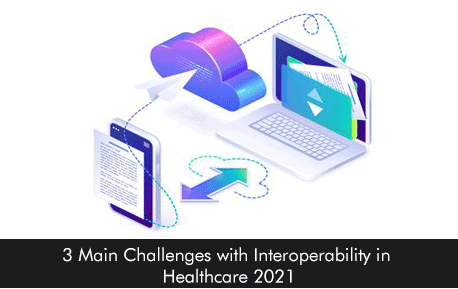Big healthcare systems leverage Electronic Medical Records (EMR) Software solutions, Patient Portals, and insurance forms for efficient workflow management. However, most of these software systems are not seamlessly interconnected which hinders productivity levels and also increases healthcare costs.
Why is interoperability in healthcare important?
Interoperable software systems in healthcare facilities the seamless exchange of health data creating a unifying environment. When EHR software systems and billing software solutions talk to each other information can be interpreted with similar systems and outside. Interoperability eventually results in a better quality of care and helps to save money for your medical practice. Healthcare interoperability has many benefits such as;
- Interoperable systems make it possible for the physician to access all crucial data they need for better patient diagnosis and treatment.
- The patient care journey is enhanced.
- Data exchanges occur automatically in interoperable systems which eliminates human errors due to manually coordinating data information exchange.
- Early diagnosis with the help of interoperable software systems.
Key challenges with interoperability in healthcare
A survey conducted by the Center for Connected Medicine revealed that fewer than 40% of medical providers in the USA have adapted interoperability to share health data seamlessly with other organizations. So what are the barricades to interoperability in healthcare?
- Standards are tough to adopt – To achieve interoperability requires a team effort, but every clinic follows different practices so the standards are different. Different information exchange rules in EHR Software and FHIR makes the implementation process for hospitals disorganized.
- Too much data needs to be handled – When data flows from one system to another there are many chances for it to overflow, and preventing this overflow of data or information is not a simple task. Too much data if not handled properly from IoT, EMR Software, and internal hospital systems can lead to a disruption in processes. Hospitals usually invest in data integration tools and healthcare analytics to avoid this problem.
- A lack of financial resources and skills – To make an interoperable environment medical clinics and organizations need to make initial investments which can lead to huge cost saving down the line. However, many healthcare organizations lack the financial resources to make the desired changes. Another obstacle to interoperability is the lack of training. By investing in training staff members they will be able to use interoperable systems properly which can enhance workflow efficiency.
What is the future of healthcare interoperability?
Despite the key problems mentioned above the prospects of interoperability seems promising due to technology advancements in AI, machine learning, and blockchain. Blockchain technology helps to keep patient data secure as it is being exchanged between different systems. AI systems help to provide doctors with real-time insights which make data from whichever source it is coming from more meaningful to improve patient outcome levels.







